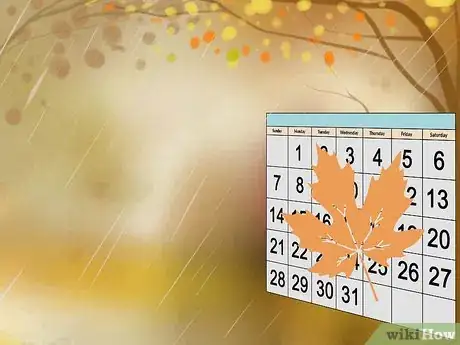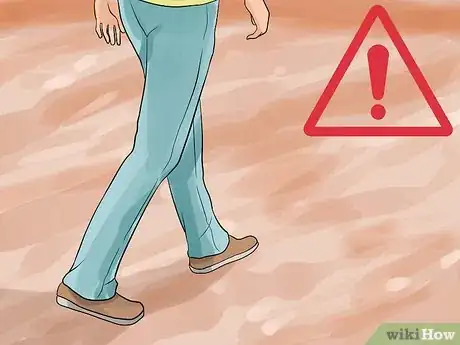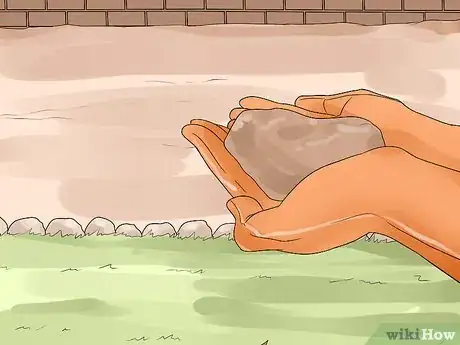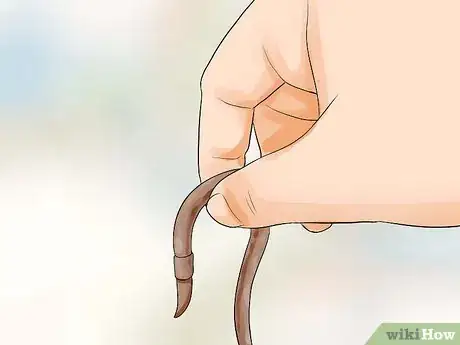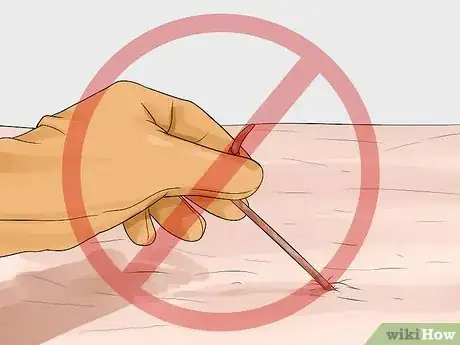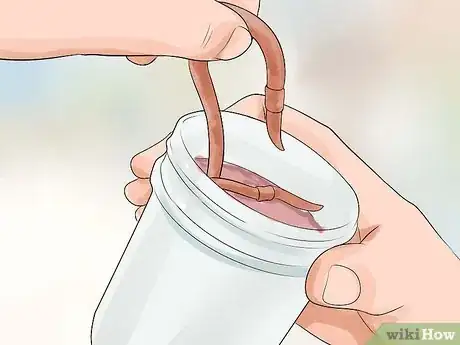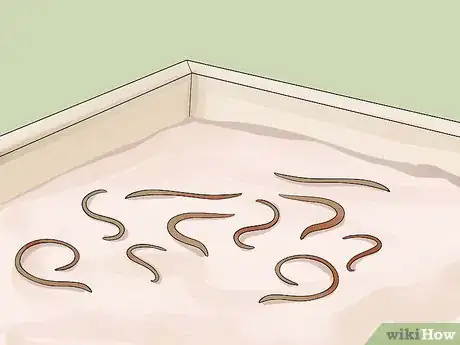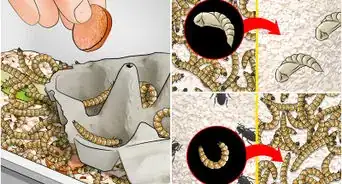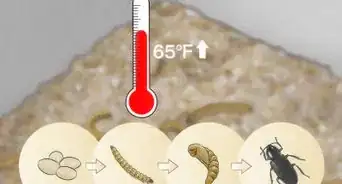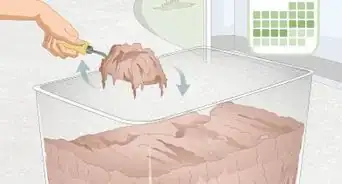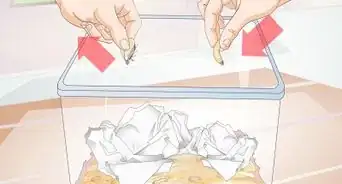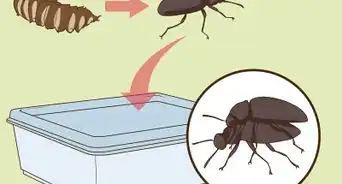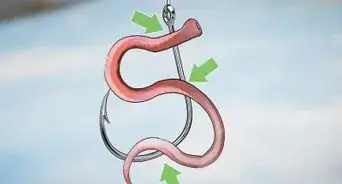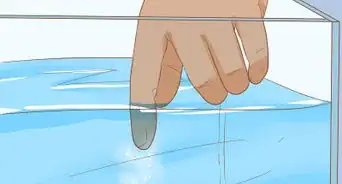This article was co-authored by Michael Reynolds. Michael Reynolds is a Professional Fishing Instructor and the Owner of Long Beach, California Fishing Lessons by Michael Reynolds. In his over 40 years of fishing experience, Michael has become very knowledgeable about the variety of fishing methods and techniques. He is passionate about sharing his knowledge with beginners to experienced anglers. Michael has been guiding and teaching fishing for over five years and is licensed and bonded with the Department of Fish and Wildlife (DFW).
This article has been viewed 87,545 times.
Look for worms in cool, moist soil. When the ground is wet on a rainy day, worms will crawl out of the earth in search of dry ground. Check sidewalks, patios, and driveways. Whether you're collecting worms for bait, compost, research, or another purpose, make sure to pick them up gently and keep them alive in a cup of loose, moist earth.
Steps
Finding Worms
-
1Wait for a rainy fall day. You can find worms at any time, but it will be easiest when it's just rained. The water drives the worms out of the ground into the open air. They'll head for dry land: sidewalks, roads, driveways, and patios. Look for worms on a humid day before it rains, or during a rain-shower. Try hunting on a cool and moist autumn day or evening.
- If you are trying to sample worms for a study, fall is the best time to start looking. Most worms are sexually mature by the time fall rolls around, which makes it easier to tell them apart.
- If it isn't a rainy season, consider watering the ground where you suspect there are worms. Make sure that the earth is thoroughly saturated. Then, wait a few hours and wait for the worms to come out – ideally, in the evening.
-
2Watch your step. Walk delicately, and try to be patient. Worms can feel the vibration of your footsteps through the soil, and the concussive effect may drive them further underground. If there are a lot of worms out, make sure that you don't accidentally crush them under your feet!Advertisement
-
3Look on the ground. Check garden soil, fields, pastures, lawns, parks – anywhere with loose soil. Look under rocks, logs, and other objects that create shelter in the soil. Don't be afraid to dig deeper if you suspect that there are worms about.
- Check your footprints. The pressure from your footstep will often bring curious worms to the surface.[1]
Picking Up Worms
-
1Pick up worms gently. Use your fingers or a pair of long tweezers. If you use your fingers, pinch the worm carefully between your thumb and index finger. Use gloves, if you must, but understand that this will make it a bit harder to get a good grip on the worms.
-
2Don't try to pull worms out of the ground. If a worm is halfway out of its hole, it isn't worth using force. Worms can tense their muscles powerfully at a moment's notice, effectively holding their bodies inside the hole. If you pull too hard, the worm will rip in half before it comes out of the hole.
- If you're determined, try digging around the worm so that you can pull it out in one piece. Try digging the chunk of hard soil out of the ground, then crumbling it apart until the worm has no place left to hide.
-
3Put the worms into a dirt-filled cup. Fill a cup, bucket, or other open container with a handful of loose, moist soil. Drop each worm into the soil as soon as you pick it up. You don't need a ton of soil – just enough to keep the worms cool and moist.
-
4Keep worms alive. The best way to maintain a worm collection is to keep them in a patch of cool, moist soil. Consider building a soil-filled "worm box" or "bait box" to keep the worms in one place. Try keeping worms in your refrigerator: packed in moist soil within a small, sealed container.[2] .
- Insert tiny holes in the top of the lid for air circulation.
- Also consider creating (or purchasing a worm farm).
- Keep worms alive even if you plan to use them as bait. They'll make better bait if you put them on the line fresh. If they're alive, they'll wriggle in the water and attract fish more effectively.[3]
Community Q&A
-
QuestionIf I'm digging a hole in the ground, will worms come to that spot?
 Community AnswerPossibly, but more likely you'll only be able to catch the worms that were already in that spot before you began digging.
Community AnswerPossibly, but more likely you'll only be able to catch the worms that were already in that spot before you began digging. -
QuestionWhere should I go to look for earthworms?
 Bridget CraghillCommunity AnswerYou can check in your garden. Try looking after it rains, as that will be the easiest time to find them.
Bridget CraghillCommunity AnswerYou can check in your garden. Try looking after it rains, as that will be the easiest time to find them. -
QuestionHow do I find worms in a very dry garden?
 Community AnswerLook under things like rocks and leaves. You could add your own water to the soil if you want to make it more moist.
Community AnswerLook under things like rocks and leaves. You could add your own water to the soil if you want to make it more moist.
Warnings
- Watch out for those centipedes, snakes, reptiles, and more dangerous bugs.⧼thumbs_response⧽
- If a worm is bleeding, do not touch it without gloves. If it's on the grass, leave it. On the sidewalk, move the poor worm to the grass.⧼thumbs_response⧽
References
About This Article
To find worms, dig through loose soil in places like gardens, parks, lawns, and fields. Also, check under rocks, logs, or any other objects that create shelter. Try searching on rainy days since water drives worms to the surface of the ground. If it's not raining, you can pour water over some soil and come back in a couple of hours to see if any worms have surfaced. To learn how to safely pick up worms that you find, scroll down!
